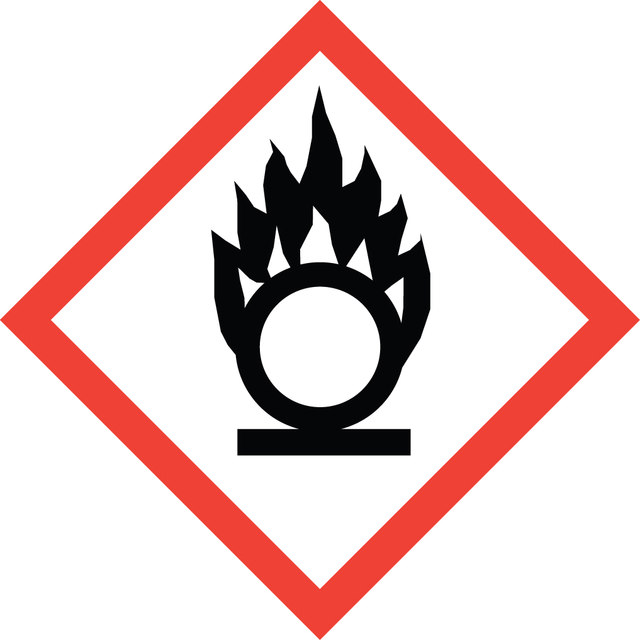516813
Hydrogen peroxide solution
50 wt. % in H2O, stabilized
Select a Size
About This Item
agency
suitable for EPA 200.7
Quality Level
vapor pressure
23.3 mmHg ( 30 °C)
assay
48-52% H2O2 basis (by KMnO4, titration)
form
liquid
reaction suitability
reaction type: C-H Activation
reagent type: catalyst
reagent type: oxidant
greener alternative product characteristics
Catalysis
Learn more about the Principles of Green Chemistry.
sustainability
Greener Alternative Product
concentration
50 wt. % in H2O
mp
−40 °C
solubility
water: soluble at 20 °C
density
1.197 g/mL at 20 °C
greener alternative category
storage temp.
2-8°C
SMILES string
OO
InChI
1S/H2O2/c1-2/h1-2H
InChI key
MHAJPDPJQMAIIY-UHFFFAOYSA-N
Looking for similar products? Visit Product Comparison Guide
Related Categories
General description
Application
- Epoxidation of alkenes in the presence of homogeneous metal catalyst.
- Oxidative halogenation in the presence of metal catalyst.
- Oxidation of sulfides to sulfoxides and sulfones in the presence of polymer immobilised catalyst.
Other Notes
signalword
Danger
hcodes
Hazard Classifications
Acute Tox. 4 Oral - Aquatic Chronic 3 - Eye Dam. 1 - Ox. Liq. 2 - Skin Corr. 1B - STOT SE 3
target_organs
Respiratory system
Storage Class
5.1B - Oxidizing hazardous materials
wgk_germany
WGK 1
flash_point_f
Not applicable
flash_point_c
Not applicable
Choose from one of the most recent versions:
Already Own This Product?
Find documentation for the products that you have recently purchased in the Document Library.
Related Content
This page is intended to make it easier to find the consumables you need based on the analytical method you’re using. Methods included on this page come from the EPA, Standard Methods and ASTM.
Our team of scientists has experience in all areas of research including Life Science, Material Science, Chemical Synthesis, Chromatography, Analytical and many others.
Contact Technical Service

